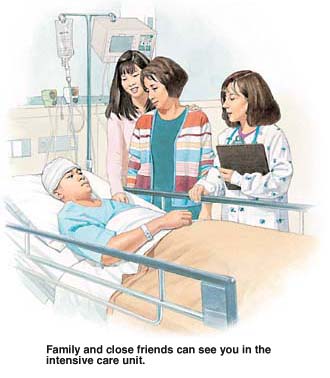AVM: Recovering from Surgery
AVM: Recovering from Surgery
After AVM surgery is completed, the surgeon will talk with your family and friends. You'll wake up in a recovery area. Then you'll be moved to a special unit, often an ICU (intensive care unit), where you can be closely watched.
In the hospital
If you're in pain, your nurses can give you medicines to help. Special equipment may be used to monitor your condition and help you breathe. When you're able, you will be moved from the ICU to a hospital room. There, you will continue your recovery.
At home
You may be able to go home as soon as you can walk, eat, and drink normally. You may have an office visit within a week or so after your surgery. At this time, any remaining stitches or staples may be removed. You can expect to meet with your surgeon several times during the first few months. You may also have follow-up imaging tests to ensure your AVM is stable.
When to call the healthcare provider
Call your surgeon at once if you have any of the following:
Increased drowsiness
Ongoing nausea or vomiting
Extreme headaches
Seizure
Shortness of breath
Pain or swelling in a leg
Increased muscle weakness
Fever of 100.4°F (38°C) or higher, or as directed by your healthcare provider
Burning during urination
Redness or drainage from the incision or an IV site
Swelling of a leg with or without pain in the calf
Updated:
February 23, 2018
Sources:
Brain Arteriovenous Malformation. UpToDate
Reviewed By:
Hanrahan, John, MD,Sudheendra, Deepak, MD
